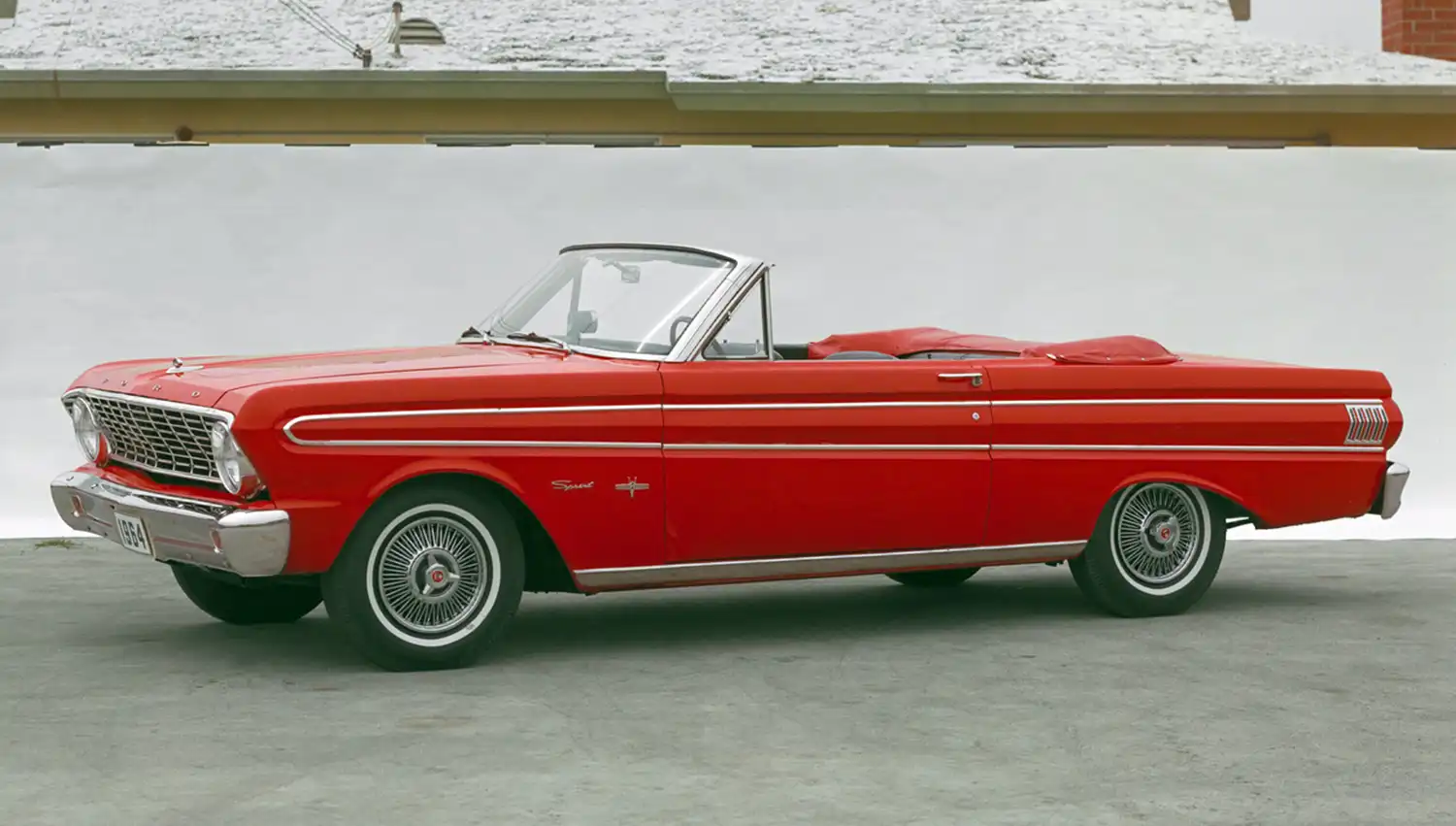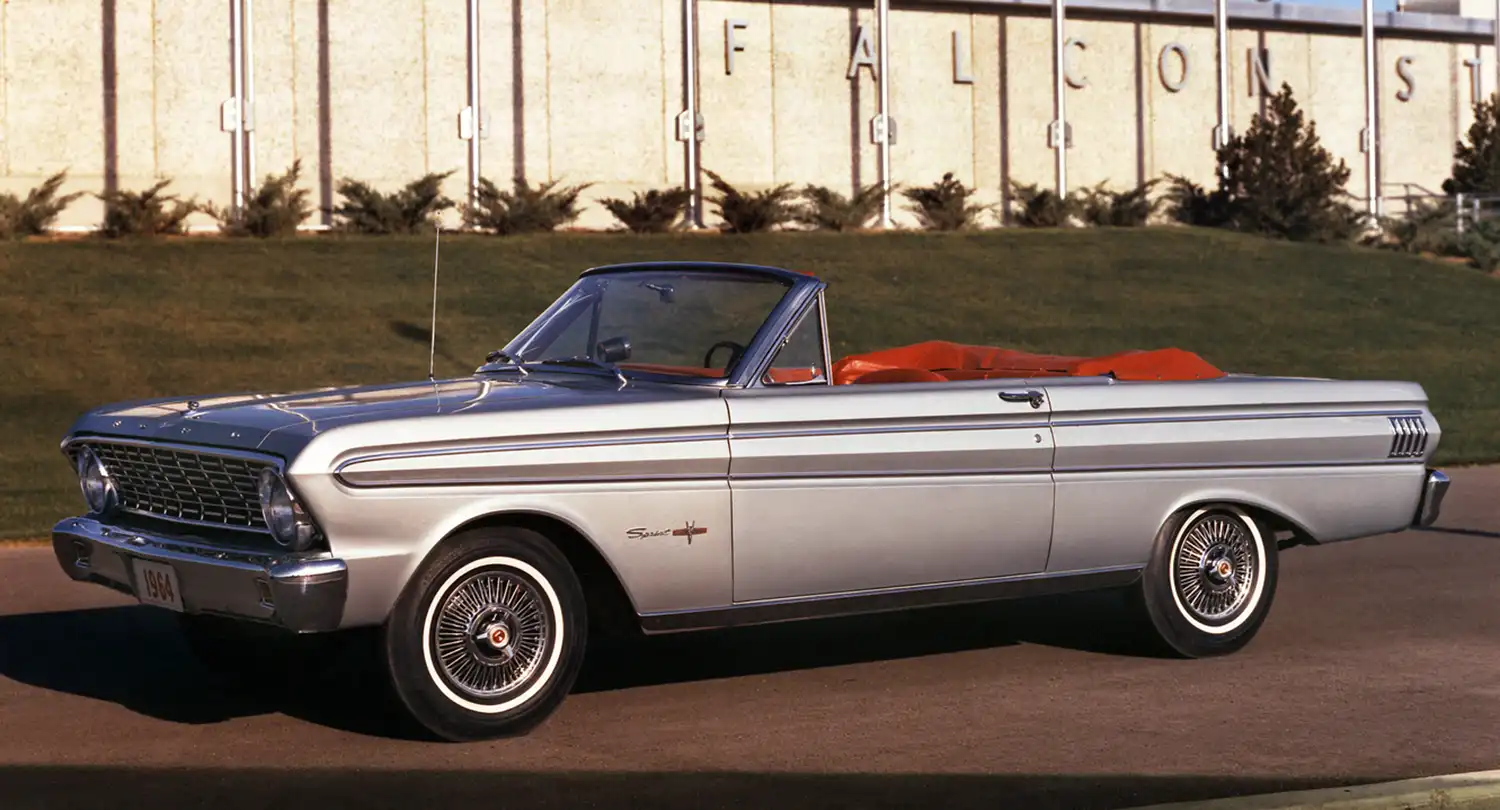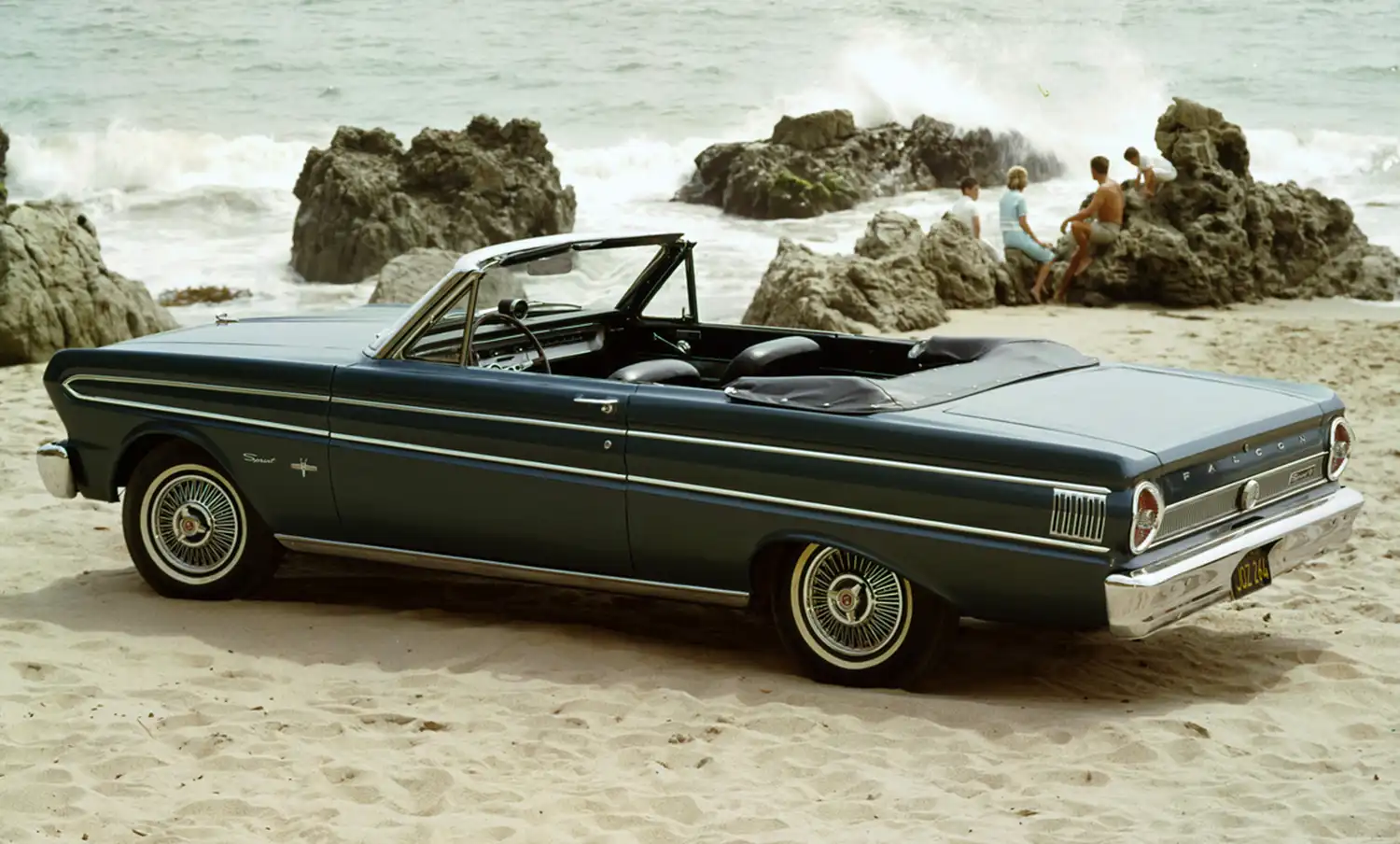
The Ford Falcon, introduced in 1960, quickly became a cornerstone of Ford’s lineup, offering practical and economical transportation. However, recognizing a growing demand for more spirited compact cars, Ford introduced the Falcon Sprint in 1963 (as a 1963 1/2 model) and continued its production through 1965. The 1964 Ford Falcon Sprint represented a significant step towards injecting performance and sporty flair into the otherwise sensible Falcon platform. Available as a sleek two-door hardtop and a stylish convertible, the Sprint offered upgraded trim, sporty styling cues, and, most importantly, the option of a V8 engine, laying the groundwork for Ford’s future muscle car endeavors. This article explores the history, design, performance, and lasting impact of the 1964 Ford Falcon Sprint, a pivotal model in the evolution of American performance cars.
From Economy to Excitement: The Birth of the Falcon Sprint: The early 1960s witnessed a shift in American automotive tastes, with a growing segment of buyers seeking more than just basic transportation. Ford, having found success with the practical Falcon, recognized the opportunity to tap into this emerging market. The introduction of the Falcon Sprint was Ford’s answer, aiming to provide a compact car with sporty appeal and the option of V8 power. The 1964 model year saw the Sprint solidify its place in the Falcon lineup, offering a compelling alternative to its more utilitarian siblings and hinting at the performance revolution that was soon to sweep the nation.
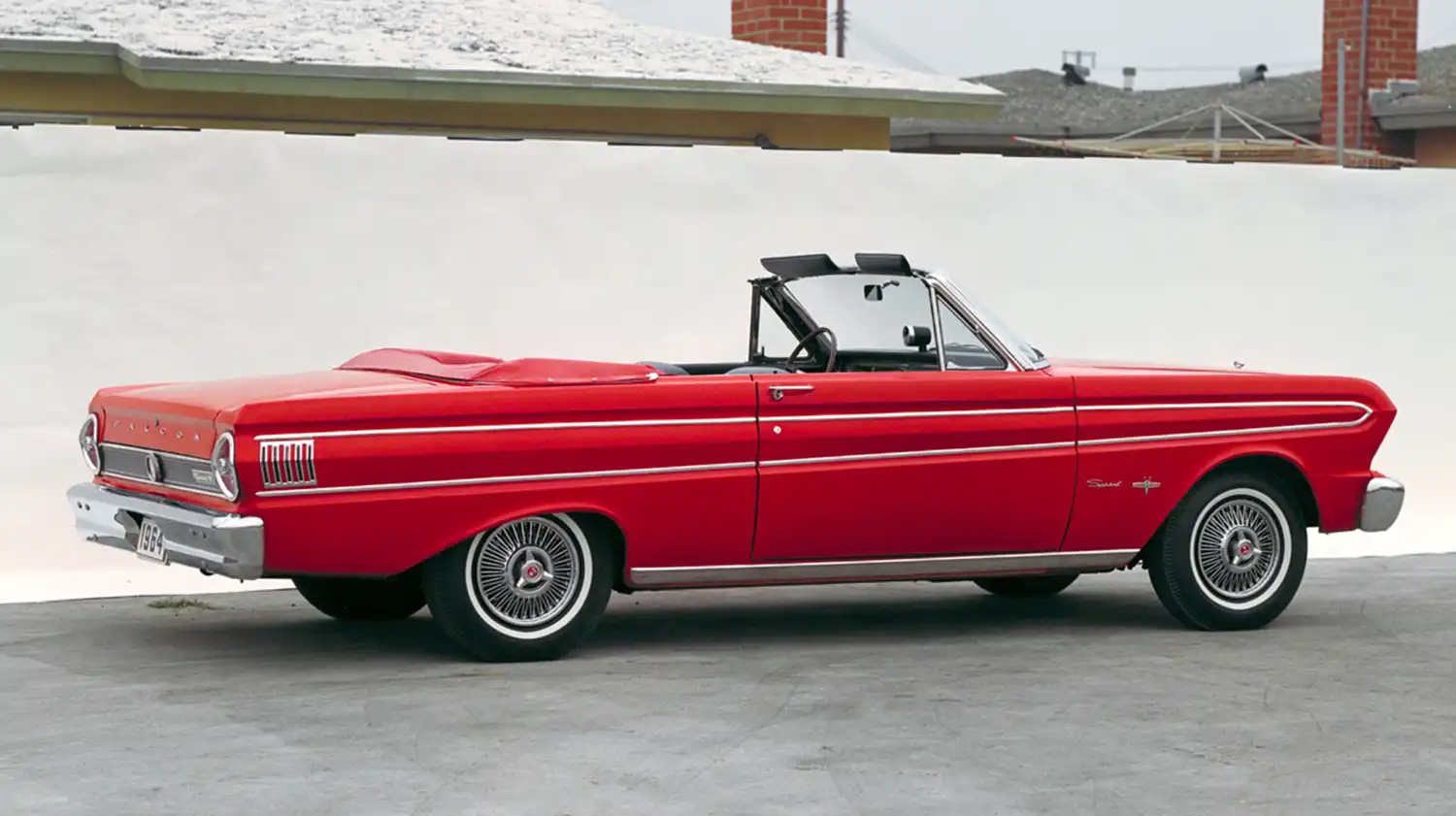
Sporty Styling that Set it Apart: The 1964 Ford Falcon Sprint boasted a number of styling elements that differentiated it from the standard Falcon models. The two-door hardtop body style, with its clean lines and slightly formal roofline, exuded a sense of sporty elegance. The convertible version offered open-top thrills and a stylish profile. Sprints typically featured upgraded brightwork, including chrome window trim, wheel covers, and unique badging. Inside, the Sprint often came equipped with bucket seats, a center console (in some configurations), and a sporty steering wheel, creating a more driver-focused cockpit. These visual cues, both inside and out, clearly telegraphed the Sprint’s more performance-oriented nature compared to the base Falcon.
V8 Power Takes Center Stage: Engine and Performance: The most significant aspect of the 1964 Ford Falcon Sprint was the availability of V8 engines. While base Falcons were typically equipped with inline six-cylinder engines, the Sprint offered the option of Ford’s venerable 260 cubic inch V8, producing around 164 horsepower. Later in the 1964 model year, the more potent 289 cubic inch V8 became available, delivering even more exhilarating performance. These V8 engines transformed the Falcon from an economical commuter into a capable and fun-to-drive machine. Transmission options included a standard three-speed manual, an optional four-speed manual for a more engaging sporty driving experience, and a two-speed Fordomatic automatic transmission. The combination of V8 power in a relatively lightweight compact car gave the 1964 Ford Falcon Sprint a noticeable performance advantage over many of its contemporaries and foreshadowed the coming muscle car era.
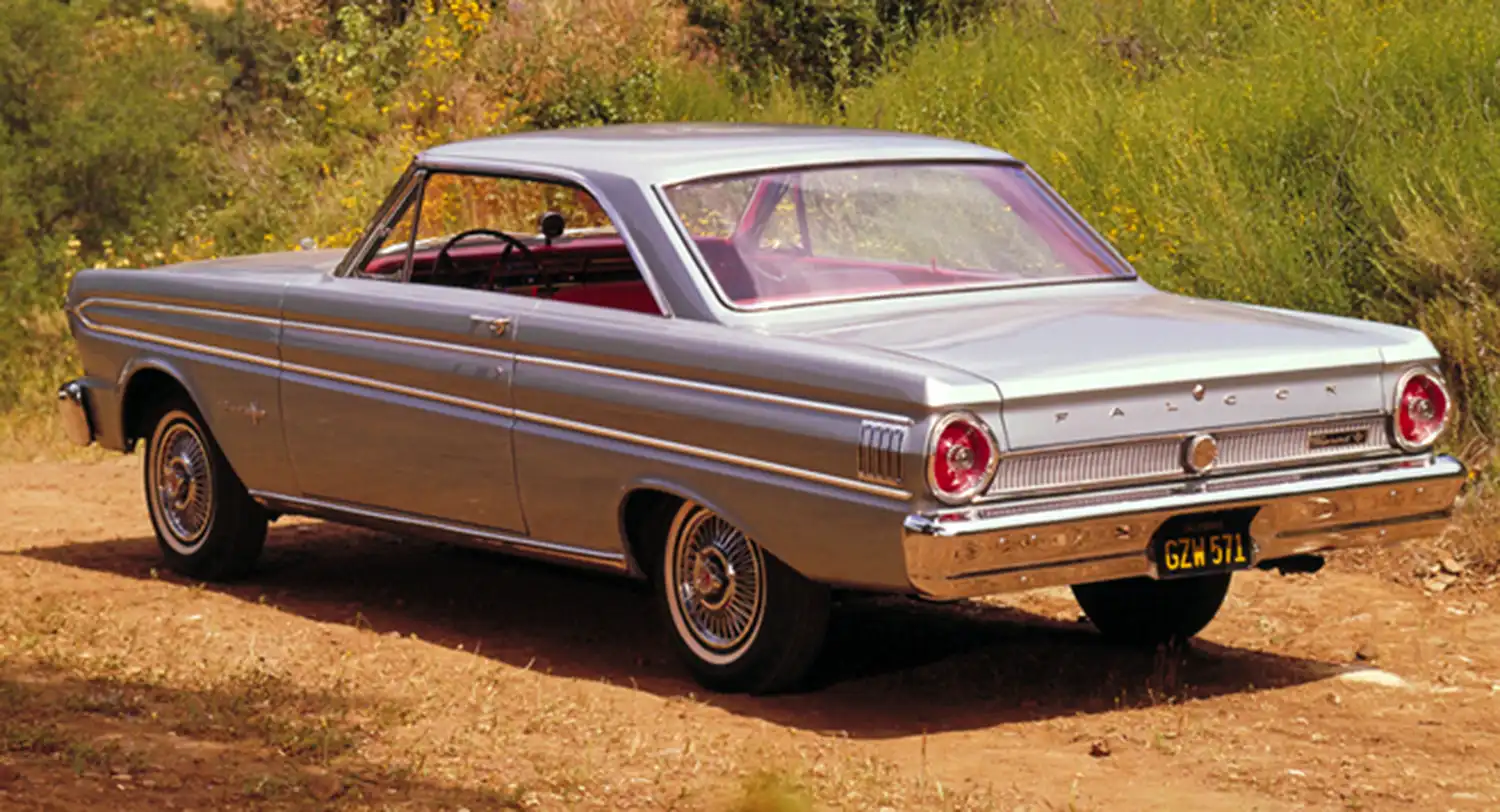
Handling and Driving Dynamics: While not a pure sports car in the vein of later Mustangs, the 1964 Ford Falcon Sprint offered improved handling and driving dynamics compared to the standard Falcon. The availability of V8 power necessitated upgrades to the suspension and chassis in some cases. The sporty steering wheel provided a more direct feel, and the option of a four-speed manual transmission allowed drivers to better exploit the engine’s power. While the ride remained comfortable enough for everyday driving, the Sprint offered a more engaging and responsive experience, particularly when equipped with the V8 engine and sporty suspension options. Its lighter weight compared to larger cars of the era also contributed to its relatively agile handling.
A Popular Choice for Early Stock Car Racing: The 1964 Ford Falcon Sprint also gained popularity in the burgeoning world of stock car racing. Its compact size, available V8 power, and relatively simple mechanicals made it a competitive platform for early stock car events. Modified Falcons, often Sprints, were a common sight on race tracks across America, further cementing the model’s sporty credentials and contributing to its performance image in the public consciousness. The images you shared likely depict such a modified Falcon Sprint in its racing element.
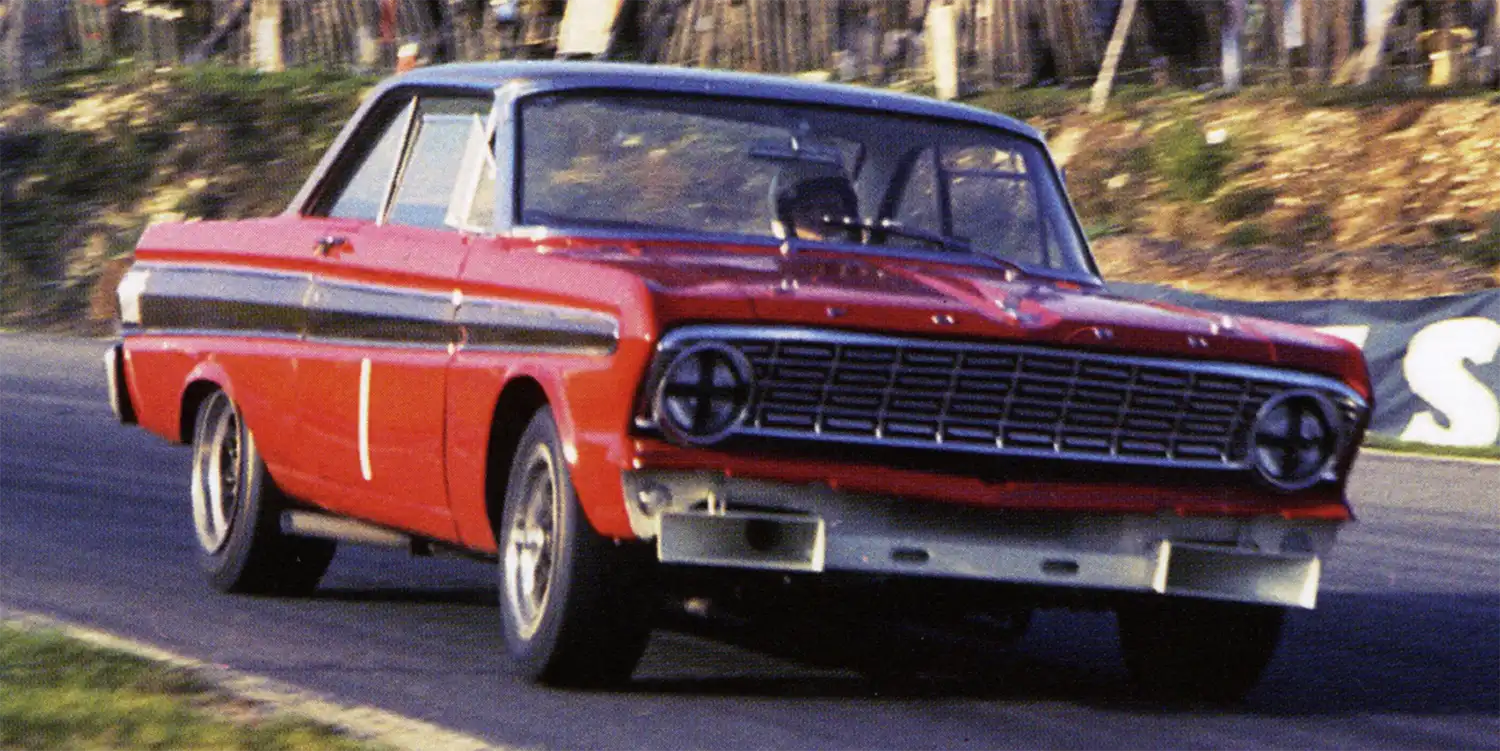
A Stepping Stone to the Mustang: The 1964 Ford Falcon Sprint is often viewed as a crucial stepping stone in Ford’s development of the iconic Mustang, which was introduced in mid-1964 as a 1965 model. The Sprint demonstrated that there was a strong market for compact cars with sporty styling and V8 power. Many of the mechanical components and design cues that found their way into the early Mustangs were first explored in the Falcon Sprint. In many ways, the Sprint paved the way for the pony car revolution that Ford would soon ignite.
The Enduring Appeal of a Sporty Compact: Today, the 1964 Ford Falcon Sprint remains a desirable classic car, appreciated for its stylish design, its accessibility to V8 power in a compact package, and its historical significance as a precursor to the muscle car era. Both the hardtop and convertible versions are sought after by collectors and enthusiasts who value its unique blend of practicality and sporty flair. Its connection to early stock car racing also adds to its appeal for those interested in automotive history and motorsports. The 1964 Ford Falcon Sprint represents a pivotal moment in Ford’s history, showcasing the company’s willingness to embrace performance in a smaller, more accessible platform.
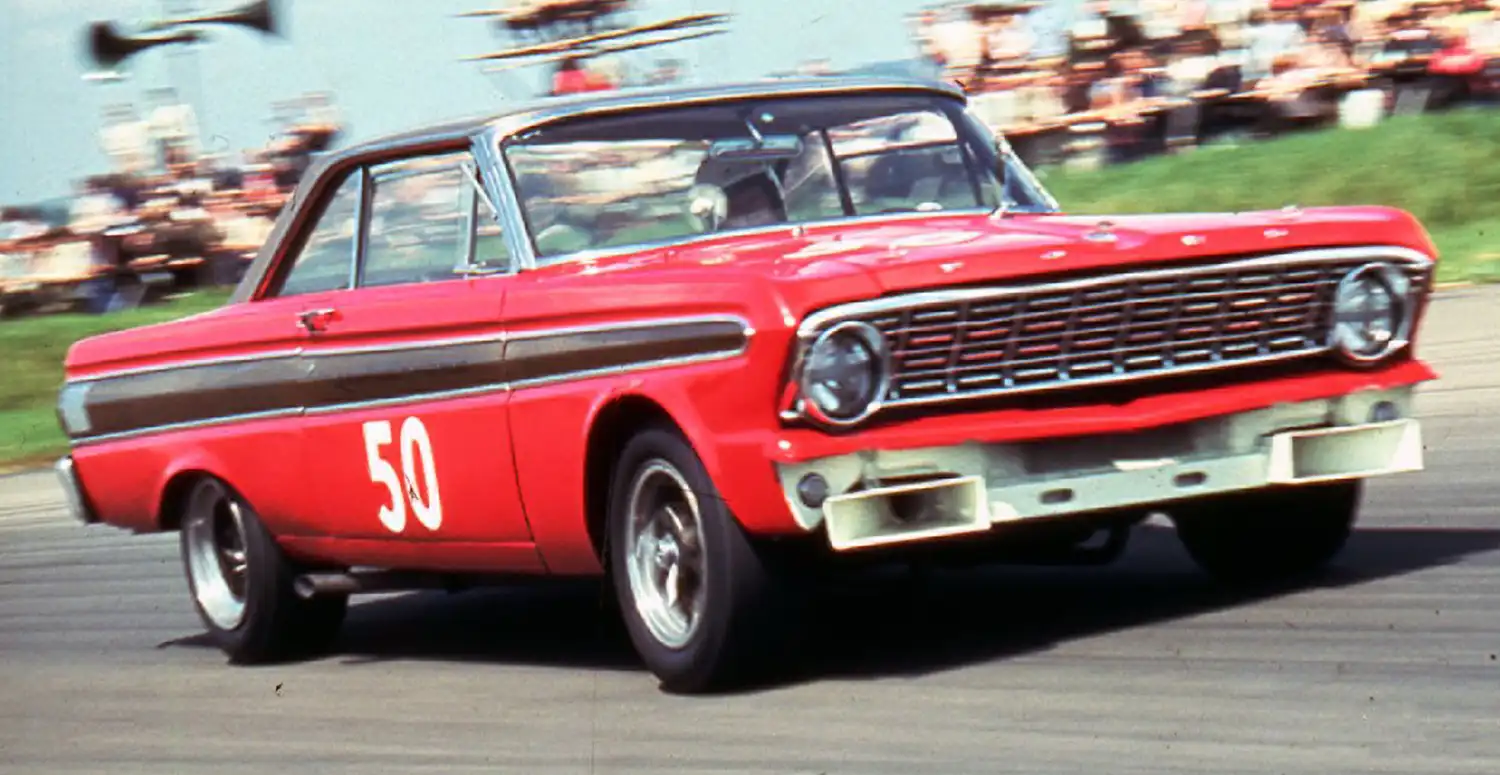
Summary:
- The 1964 Ford Falcon Sprint offered sporty styling in hardtop and convertible body styles.
- It was the first Falcon to offer optional V8 engines (260 and 289 cubic inches).
- Featured upgraded interior and exterior trim compared to base Falcons.
- Offered relatively agile handling for its time.
- Gained popularity in early stock car racing.
- Is considered a precursor to the Ford Mustang.
- Remains a desirable and collectible classic car.
Disclaimer: Specific engine output and available features for the 1964 Ford Falcon Sprint may have varied based on the production period and regional market.
Source : Ford & Ford Heritage Vault
This article was crafted with assistance from Gemini
